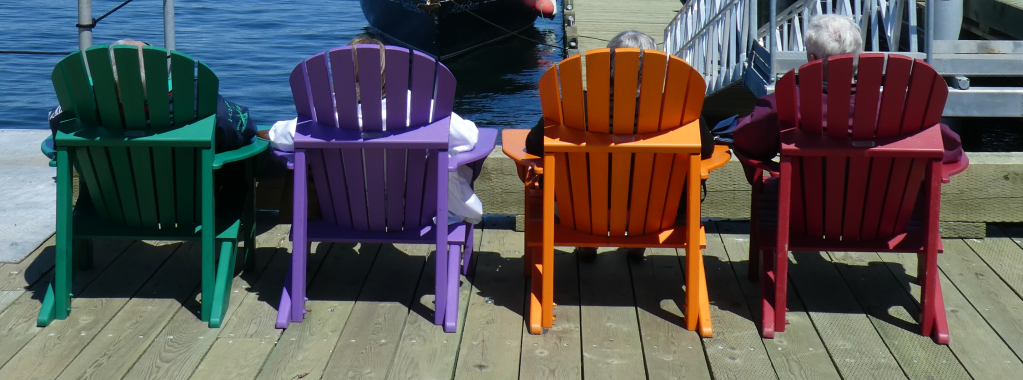3-minute read

What is holding space?
Dr. Nicole LePera describes it as being “fully present and curious with someone, without judging or attempting to change them, as they express their emotions and experiences.” 1 I’d heard of it, but I didn’t truly understand the power of holding space until I experienced it firsthand.
I was staying at a small, nearly empty, hotel in Newfoundland during the off-season last year. One evening as I was walking down the hallway toward the lobby, I heard the hotel front desk clerk say into the phone, “it’s okay, it’s going to be alright, I love you.” She hung up the phone just as I got there and before I knew what I was doing, I asked this total stranger if everything was okay.
Without hesitation, it all came pouring out. She told me she was speaking to her husband on the phone. He had incurable cancer and was near the end of his life. I calmly listened as she explained that her husband didn’t leave the house very much as he was no longer mobile and had trouble breathing. Unfortunately, his son often got drunk and phoned his dying father to yell at him for not visiting his grandchildren more often. Upset, her husband would then call her.
She said her husband’s calls were very hard on her. She wanted to be there for him, but she would be so upset after talking to him that she couldn’t think clearly. The situation was affecting her ability to do her job, and she needed to keep working.
When she had got it all out, she shook her head and said “I shouldn’t be telling you all this.” I assured her that I was glad to be there to hear her story. She was visibly calmer and I could see that it had really helped her to be able to talk about what was happening. But, why did it help? Nothing had changed. Her problem wasn’t solved. Why did just telling her story calm her down?
I later found out why from a podcast on Polyvagal Theory 2.
Apparently, our autonomic nervous system moves in and out of three states all the time depending on external stimuli. When we are feeling safe and calm, we are in what is called a ‘ventral vagal state’ (rest and digest) and ready for social engagement and connecting with others. When we are feeling unsafe or stressed, we are in one of the two other states – ‘sympathetic’ (fight or flight) or ‘dorsal vagal’ (freeze).
Although we need all three of these states to keep us safe and functioning well, our ability to continually return to a calm ventral vagal state, or rest and digest, once any danger or stress has passed keeps our nervous system regulated and healthy.
Deborah Dana explains that when life has gotten too much for us and we are feeling overwhelmed, we go into a sympathetic state of anxiety. In this state, we can’t do anything about the problem because we’re stuck in it. We’re just swimming around and around in it. (2) Much like the hotel clerk after she spoke to her husband.
I, on the other hand, was on vacation and feeling safe and calm in that moment. When we feel safe, “it is reflected in our eyes, our voice, and our body language. We are fully present, and there is a lightness and ease in our manner. This sense of safety is passed on to others in a process called co-regulation. When others are reassured that you are not a threat, they, too, will feel safe and enter the same social activation mode that sets them at ease.” 1
So, I didn’t have to solve the hotel clerk’s problem to help her feel better. Through co-regulation, I had extended my ventral vagal connection to her at a time when she had lost connection to her own.2
How powerful is that! We can help regulate another person’s nervous system by calmly holding space for them to get back to a state where they can think clearly enough to figure out their own problem or at least get on with life.
—
1 – How to Do the Work: Recognize Your Patterns, Heal from Your Past, and Create Your Self by Dr. Nicole LePera
2 – Becoming An Active Operator of Your Nervous System, Insights at the Edge podcast with Deborah Dana, LCSW November 2021 (https://resources.soundstrue.com/podcast/becoming-an-active-operator-of-your-nervous-system/)

This makes so much sense, Lisa! I’ve been listening to a lot of parenting podcasts and many of them say that when our kids are having tantrums they need parents to stay calm and loving so they can experience co-regulation. After many of these experiences they then learn to self-regulate. But the experience of co-regulation with a calm parent is needed first.
Thanks for sharing that Lea. I could have used that advice many times over the years 🙂